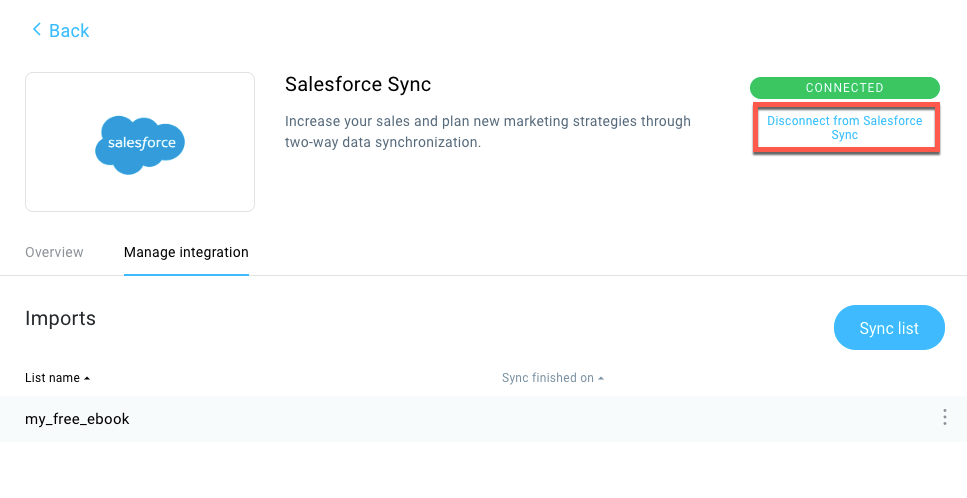How to keep Salesforce and GetResponse contact data in sync?
To use this integration, you will need one of the following Salesforce editions:
- Enterprise Edition
- Unlimited Edition
- Developer Edition
- Performance Edition
You can connect your Salesforce and GetResponse accounts with Salesforce Sync. It is a two-way integration that lets you:
- add Salesforce leads or contacts to a selected contact list in GetResponse,
- add GetResponse contacts to your Salesforce leads or contacts,
- have the most recent contact information in both applications. If you update contact information in one system, it’s automatically updated in the other.
When you’re syncing the applications for the first time, you’ll need to connect the accounts, configure the sync, and map Salesforce custom fields onto the custom fields you use in GetResponse. Once you’ve connected the accounts, you can sync more lists and edit the existing syncs.
When you’re preparing data for syncing, keep in mind that,
- Email is a required field in GetResponse. Make sure to include it in the lead and contact info.
- Lead Source is a required field for Salesforce leads.
- If you have Salesforce custom field data for Country and Phone that doesn’t match the format used in GetResponse, map this custom field to the custom field type “text”.
- We can only sync data for leads that have not been converted into contacts in Salesforce.
- When contact/lead is removed from Salesforce we delete it from GetResponse contact list
Connecting Salesforce and GetResponse accounts
1. In your GetResponse account, go to Integrations and API.
2. Hover your mouse over the Salesforce Sync tile and click “Details”.
3. Click Connect.
4. From the dropdown menu, select the Salesforce instance to you want to connect your GetResponse account to. You can choose between:
- production. This is the “live” environment where all your Salesforce data is. You use it to run your business.
- sandbox. This is a testing environment separate from production. You can create a sandbox in Salesforce to test this integration.
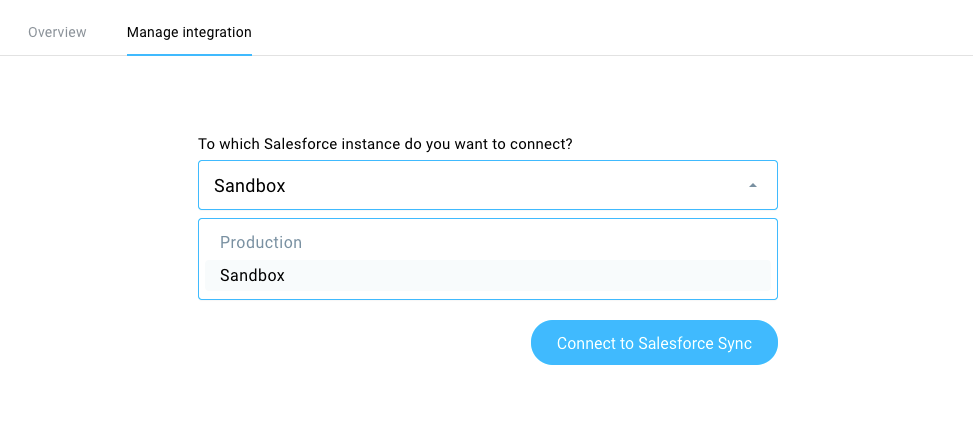
5. Click the Connect to Salesforce Sync button to open the Salesforce login page. (If you’re already logged into Salesforce, the accounts will be connected automatically and we’ll direct you straight to the page when you can configure the sync.)
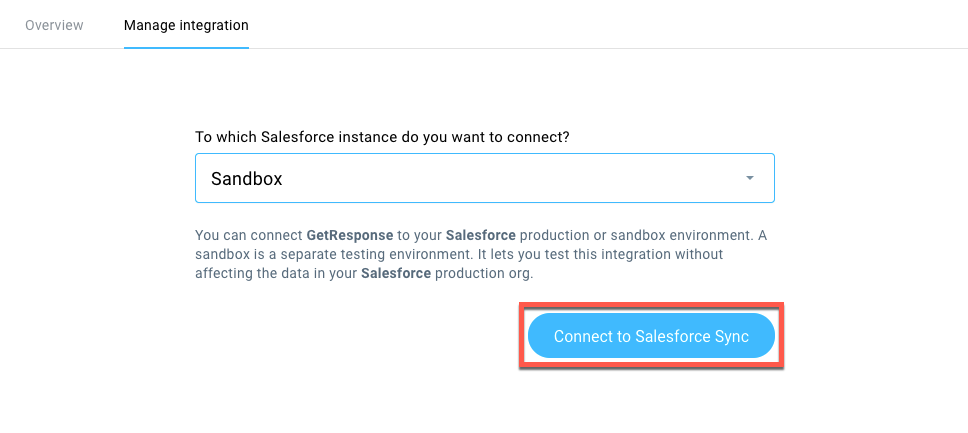
6. Log into Salesforce to connect the accounts.
When the connection is complete, the Configure Salesforce Sync page opens. This is where you can set up the sync to start passing information between GetResponse and Salesforce.
Configuring the sync
For the data to be passed between the accounts, you’ll need to:
1. Select the list you want to sync.

2. Choose if you want to create contacts in GetResponse from Salesforce contacts or leads.

3. Expand the list to select the lead source from which contacts or leads will be passed to GetResponse. Click Apply to confirm.
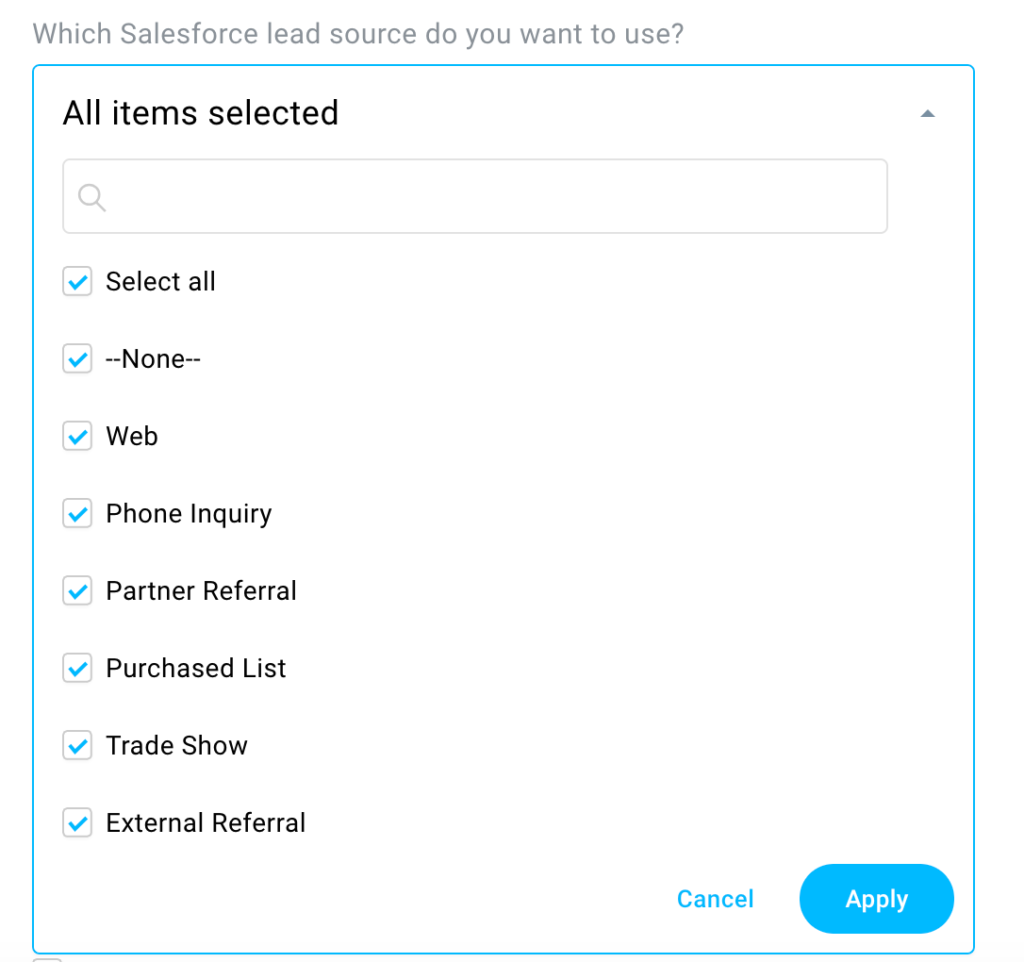
4. Select the lead source for contacts added in GetResponse (this tells us what lead source information should appear in Salesforce when the contact info is synced).
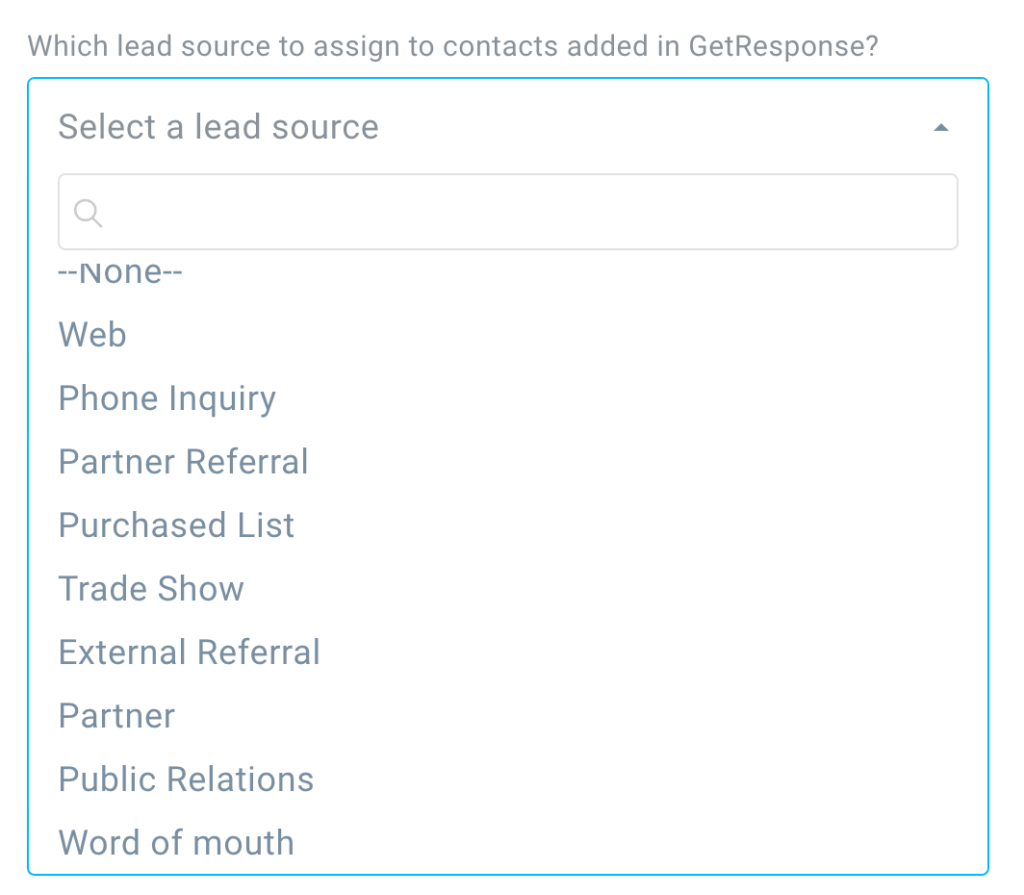
5. Select which Salesforce checkbox field we should use to flag contacts removed from your GetResponse list. For example, you can add the custom field “GRdeleted” to your leads and contacts. When we sync the data, we’ll automatically check the box for everyone who’s no longer in your list.

6. Select which account to use as the preferred one to sync and update the data correctly. This information is important because it lets us know:
- which data we should use to update your GetResponse contact list during the first sync,
- which data we should use when contact information doesn’t match up. This could happen when custom fields of the same contact have different values in Salesforce and GetResponse. For example, the custom field “Country” assigned to Contact A was “Italy”. But it was changed to “Austria” in GetResponse and “Germany” in Salesforce. For us to sync the correct change, we need to know if we should use data from GetResponse or Salesforce.

7. Confirm that your contacts have consented to be added to your list and click Next to start mapping custom fields.

Mapping custom fields
You map additional contact information onto your GetResponse custom fields on the Assign custom fields page. You get there automatically, once you’ve configured the details for the sync. Custom fields from Salesforce (bottom line) and the options for matching them to the GetResponse custom fields (top line) are displayed in columns. Move the mouse pointer over the grid and scroll right to access and configure all the fields.
Our system can automatically recognize the email field. Note: Email information is required in GetResponse.
To map the custom fields,
1. Click on Assign field and choose one of your existing custom fields. Repeat this step for all the custom fields you want to match.

2. To skip assigning non-required fields, select the Skip column marked with “?” box.

3. When you’re done, click Synchronize to confirm.

When you finish the setup, you’ll return to the Salesforce Sync overview, where you can review the status of the sync and edit its settings.

How to stop the integration?
To stop the sync for a specific list,
1. Go to Integrations and API.
2. Hover your mouse over the Salesforce Sync tile and click Details.
3. Move the mouse pointer over the Actions menu for the synced list and click Cancel sync.

To disconnect the integration altogether, go to Integrations and API and click Disconnect from Salesforce, and confirm your choice.
